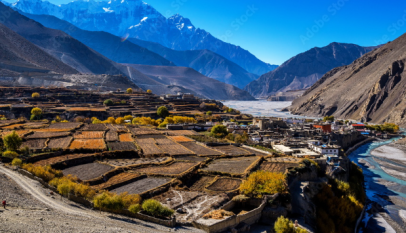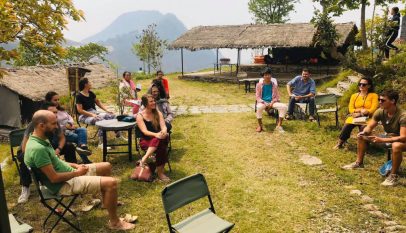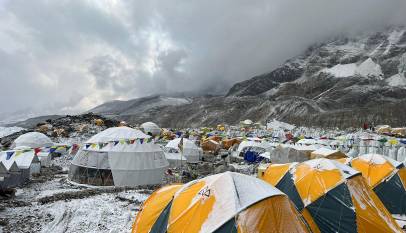Sagarmatha National Park: Paradise of Natural Beauty
- HB Kham (hit)

Sagarmatha National Park is home not only to the world’s highest peak Everest or Chomolungma, but also is the sheer embodiment of mesmerizing paradise of natural beauty, insurmountable icy mountains teeming with, glaciers, gorgeous gorges and rare 118 species of birds on earth.
On the other hand, the region is also known for purity and tranquility and is deemed to be an abode of Gods and Goddess according to Hindu and Buddhist religious myths.
The park established in 1976 with a space of 1,1148 km in Solukhumbo district, was enlisted into the UNESCO’s world heritage list in 1979.
Since then it has protected rare species such as the panda and snow leopard and drawn the attention of thousands of tourists from across the world.
The park situated at a height of 6000 meters from sea level has substantially garnered the national economy by luring thousands of tourists in every peak season, thereby supporting the enrichment of state coffer.
The term “Sagarmatha” being a Nepali word stems from two words-‘Sagar’ and ‘matha’. The first word ‘Sagar’ means ‘ocean’ and ‘matha’ means ‘head’ which combines to give a complete sense of ‘Sagarmatha’ or ‘Head of an ocean as legend has it that the head of Sagarmatha or Everest had risen from the ocean long long ago in time immemorial.
The park automatically attains the entity of exotic unique area after you peek at the pristine cultural attributes of nearly 5000 Sherpas in 20 rustic villages of Khumjung, Kunde, Namche, Thame, Pangboche, Thyangboche, and Phortse, who are always ready to welcome the new arrival of tourists with their tender and innocent smiling hospitality, that might deeply touch your inner heart and make a warm place for these gullible mountainous tribes, whose life depends much on how much tourists pass through their villages every now and then.
The bird species to watch from a distance include yellow-billed chough, blood pheasant, monal and red-billed chough. Variety of rare wild animals include musk deer, snow leopard, Himalayan black bear, and Red pandas, Tibetan snowcock, pheasant, Himalayan thars, Langur monkeys, and martens and Himalayan wolves.
The natural flora and fauna include forest of birch, juniper, blue pines, firs, bamboo, and rhododendron.
The rivers originating from the glaciers and snow of this region include Bhotekoshi, Dudhkoshi, and Imjakhola. And high mountains include Nuptse (7,896m), Cho-Oyu (8153m), Lhotse (8501m), and Sagarmatha (8848 m).
Even the legendary myth of “Yeti” walking silently in this region (Yeti’s rare footprints seen by few travelers) is reportedly prevalent as heresy among few past summiteers of Mt Everest can be more enchanting for any tourist.
When to visit this region?
It is better to visit this region in Autumn in the months of October-November and in March-May in summer.
Mustang as international tourist destination
Luring Mustang as one of the top tourist destinations in Nepal involves highlighting its u…












